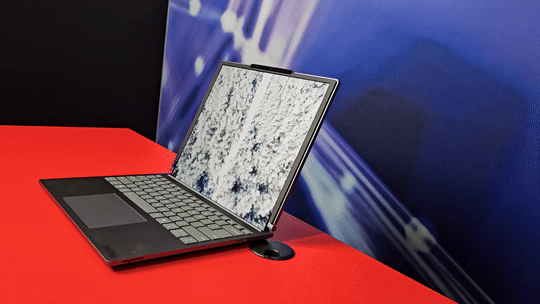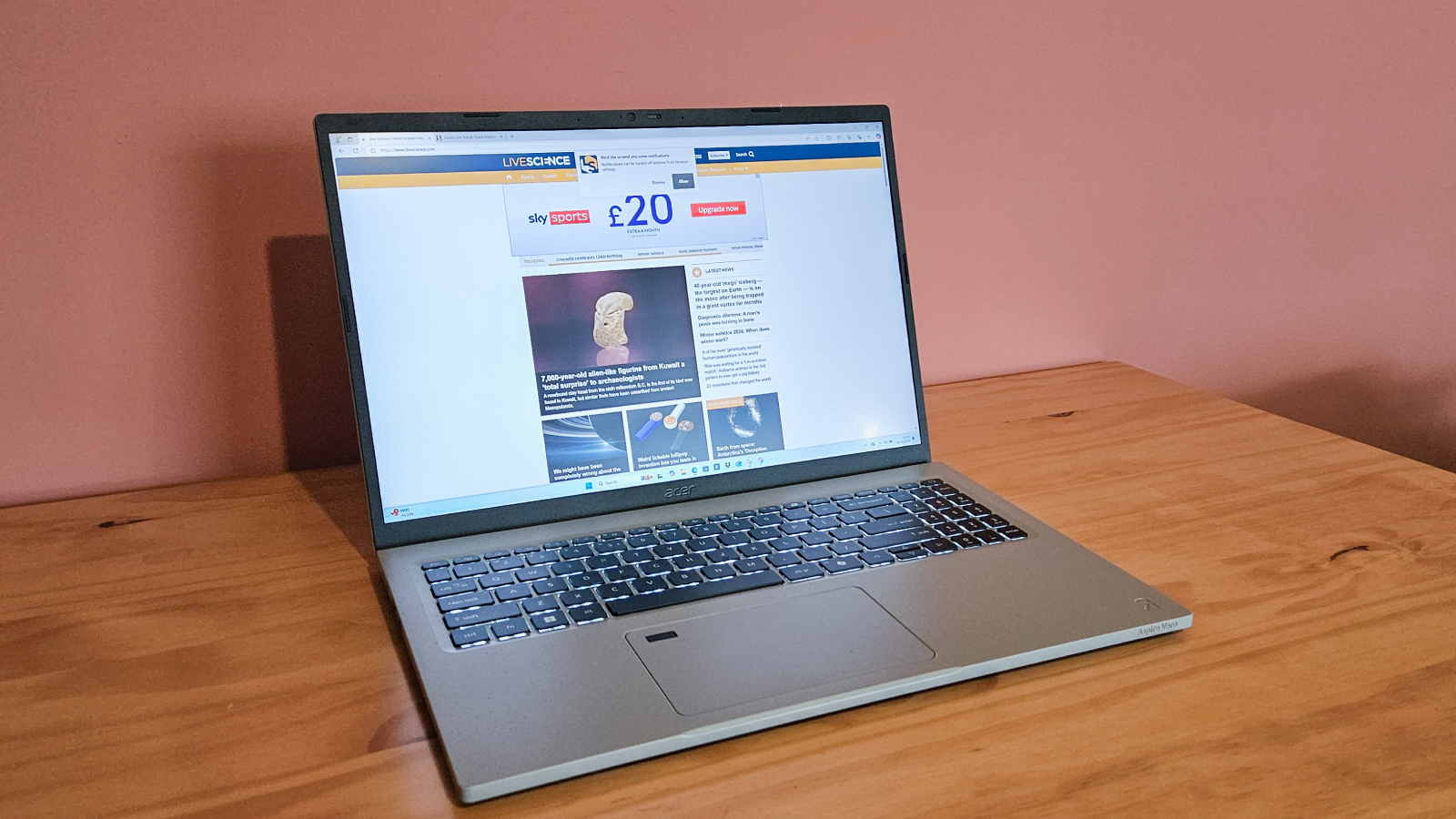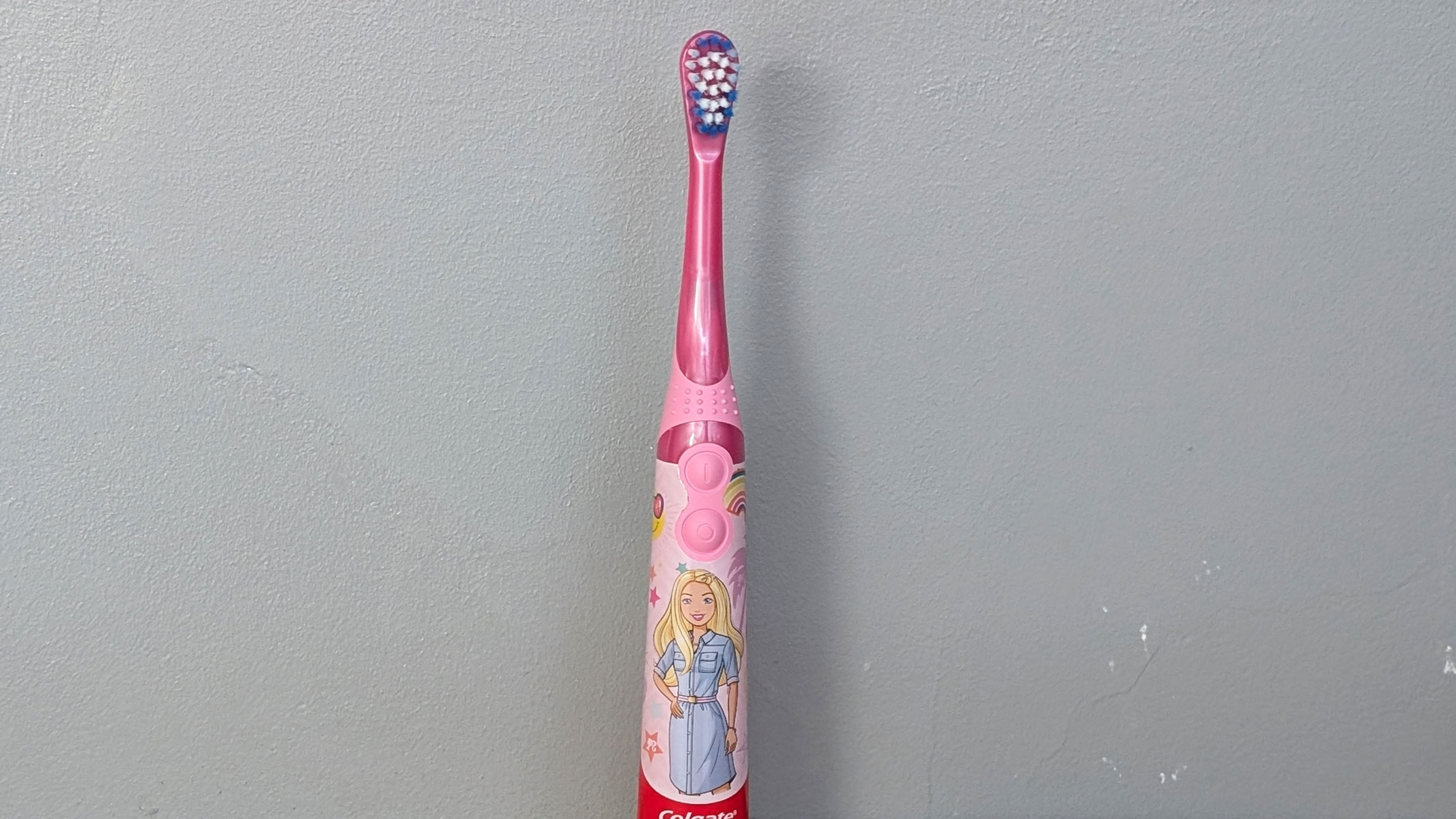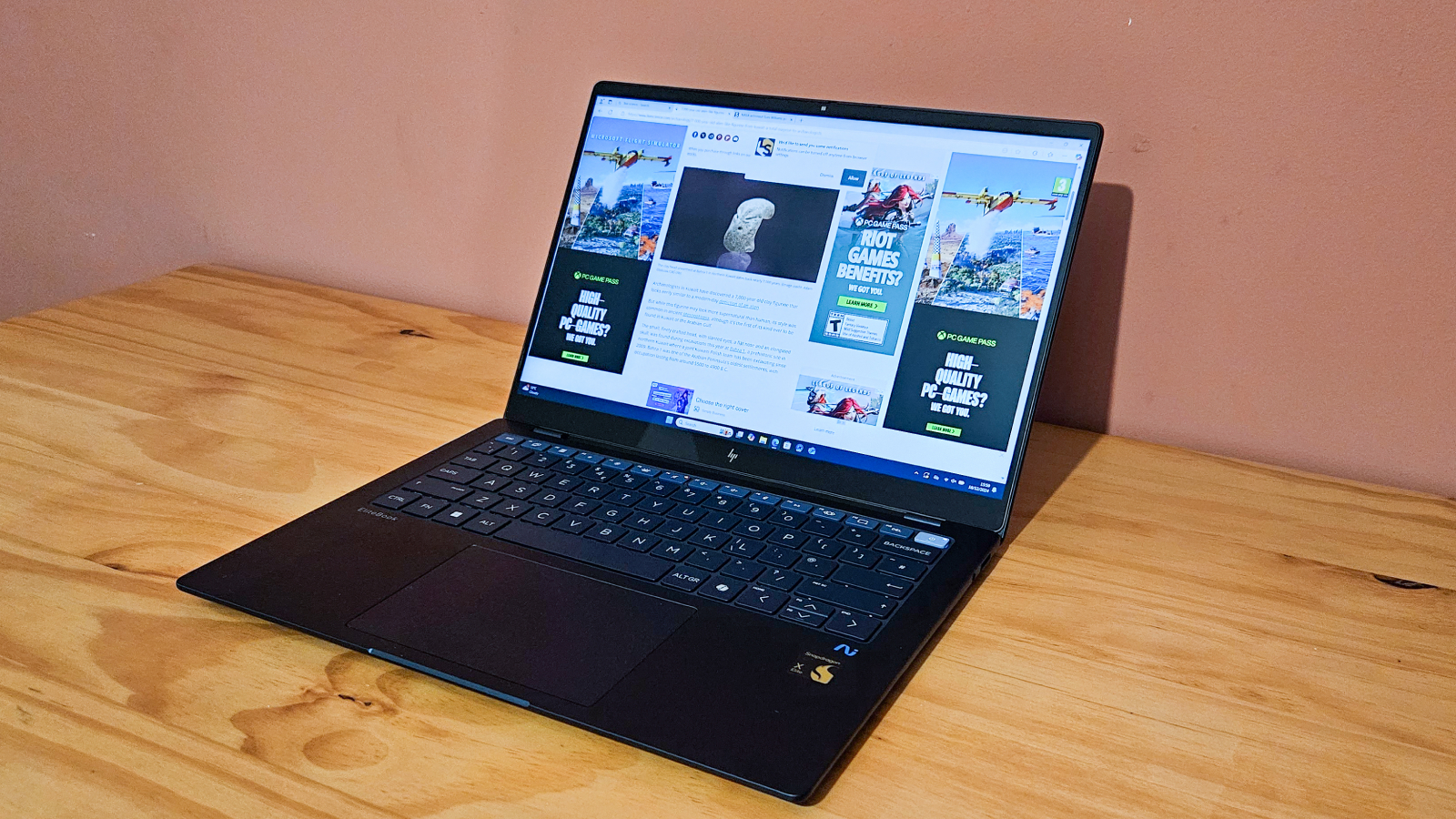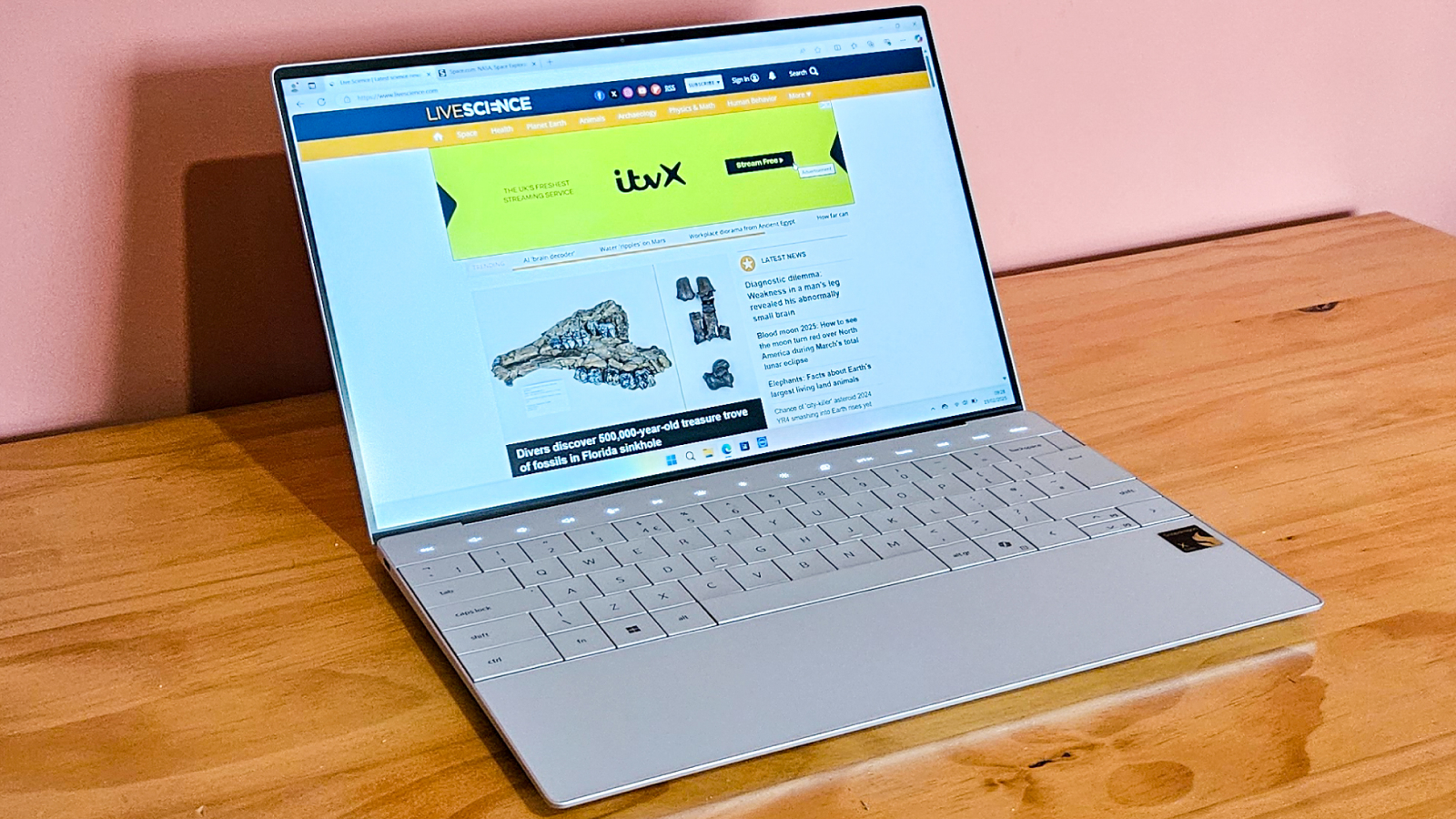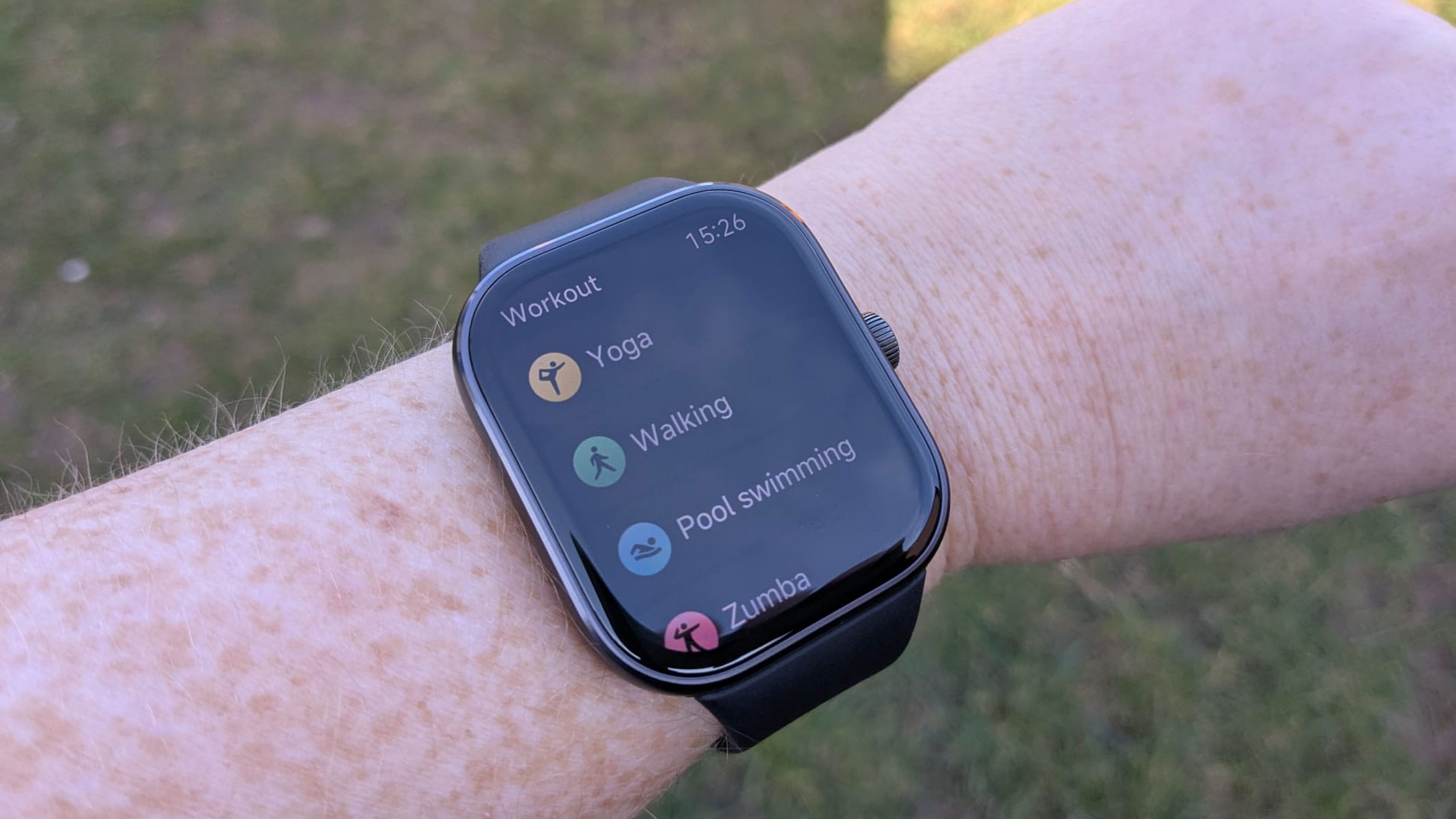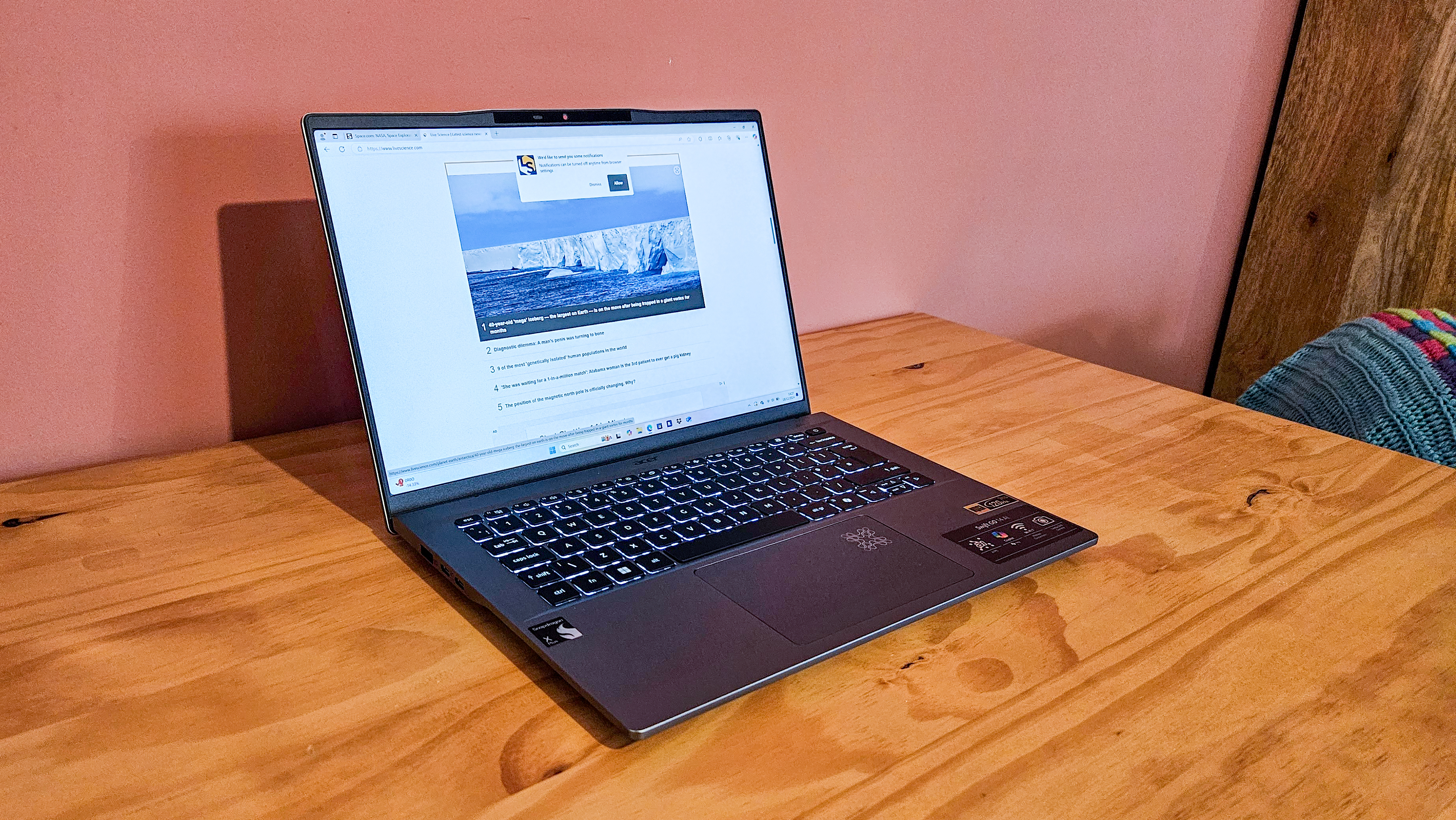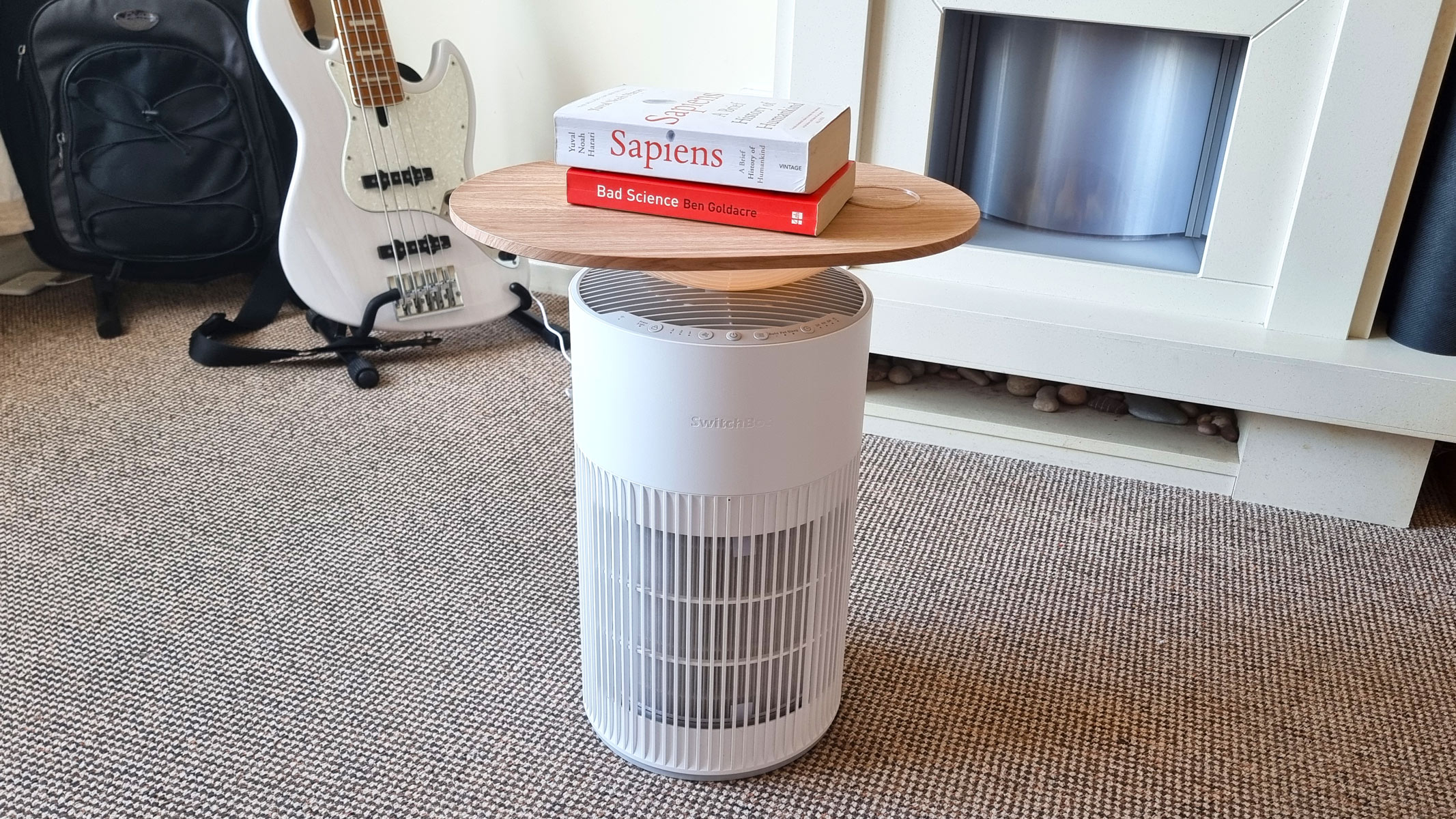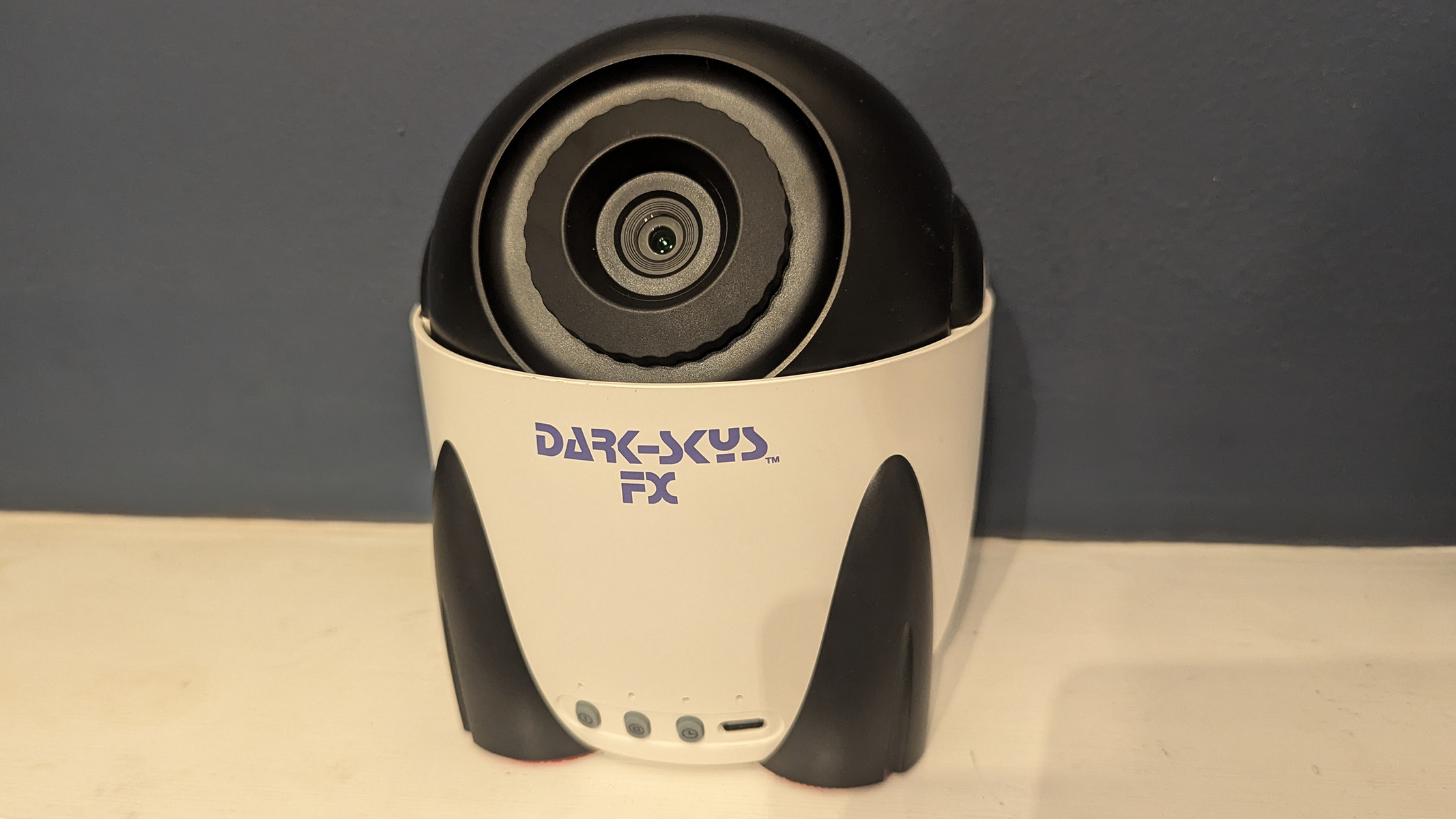Live Science Verdict
The first rollable laptop in the world might seem like a gimmick, but creatives could find use for it when it launches in spring — so long as they can stomach the $3,499 price tag.
Pros
- +
Innovative extendable display
- +
Latest Intel chipset
- +
Bright and vibrant panel
Cons
- -
Expensive retail price
- -
Weighty and bulky
- -
Not the best-looking
Why you can trust Live Science
LAS VEGAS — One of the most eye-catching technologies of CES 2025 is Lenovo's rollable laptop. Lenovo has always had a knack for playing with the design of laptops and 2-in-1s, to varying degrees of success. The Lenovo ThinkPad X1 Fold Gen 2, for example, is a foldable laptop with an immersive display, but it fell short in some areas including battery life. The Lenovo Yoga Book 9i, on the other hand, offered a fantastic dual display with a clip-on keyboard.
— Up to Intel Core Ultra 7 (Series 2)
— Intel Arc Xe2 Graphics
— Up to 32GB LPDDR5x RAM
— 14-inch (extendable to 16.7-inch) OLED display
— 66Wh battery
— 11.93 x 9.06 x 0.78 inches (303 x 230 x 19.9 millimeters)
— 3.73 pounds (1.69 kilograms)
When the manufacturer announced its proof-of-concept rollable laptop in October 2022, I was excited at the possibilities, especially for those who regularly work with images. You could use it as a regular laptop but then really take advantage of additional display real estate if you're a creative professional who needs more vertical area on the screen or you want to work with two apps at once with a bit more flexibility.
Now launching this spring for $3,499, there's a chance it might be one of the best laptops for photo editing if its Intel chipset is sufficiently powerful and its display proves more than just a gimmick. I went hands-on with the device here at CES 2025, ahead of its launch.

Keumars is the technology editor at Live Science, and is currently roaming the conference halls of CES 2025 looking for impressive new technologies and a robot dog he can call his own. He has written for a variety of publications including ITPro, The Week Digital, ComputerActive, and TechRadar Pro, and was previously features editor at ITPro.
Lenovo ThinkBook Plus Gen 6 Rollable: Design
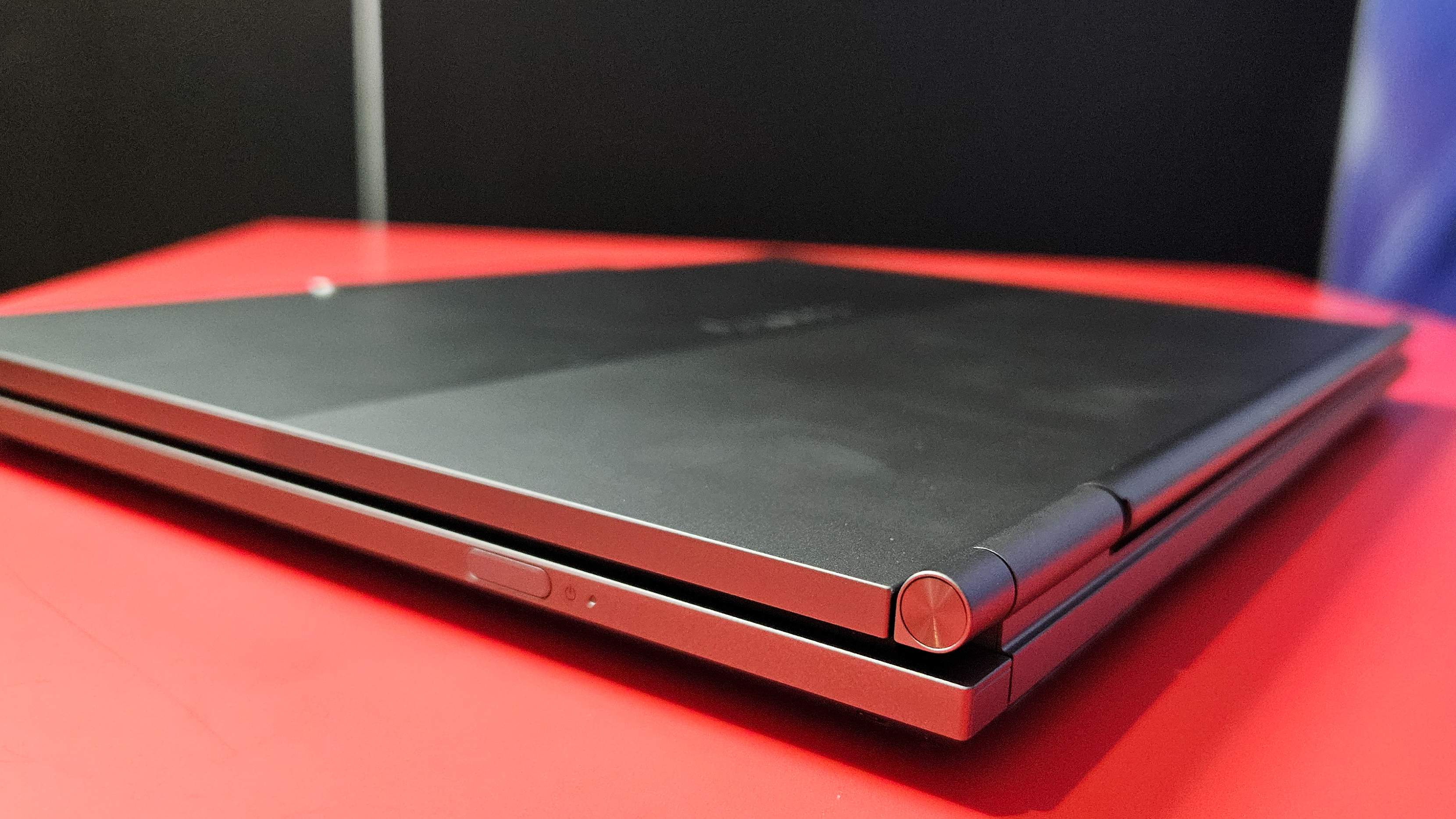
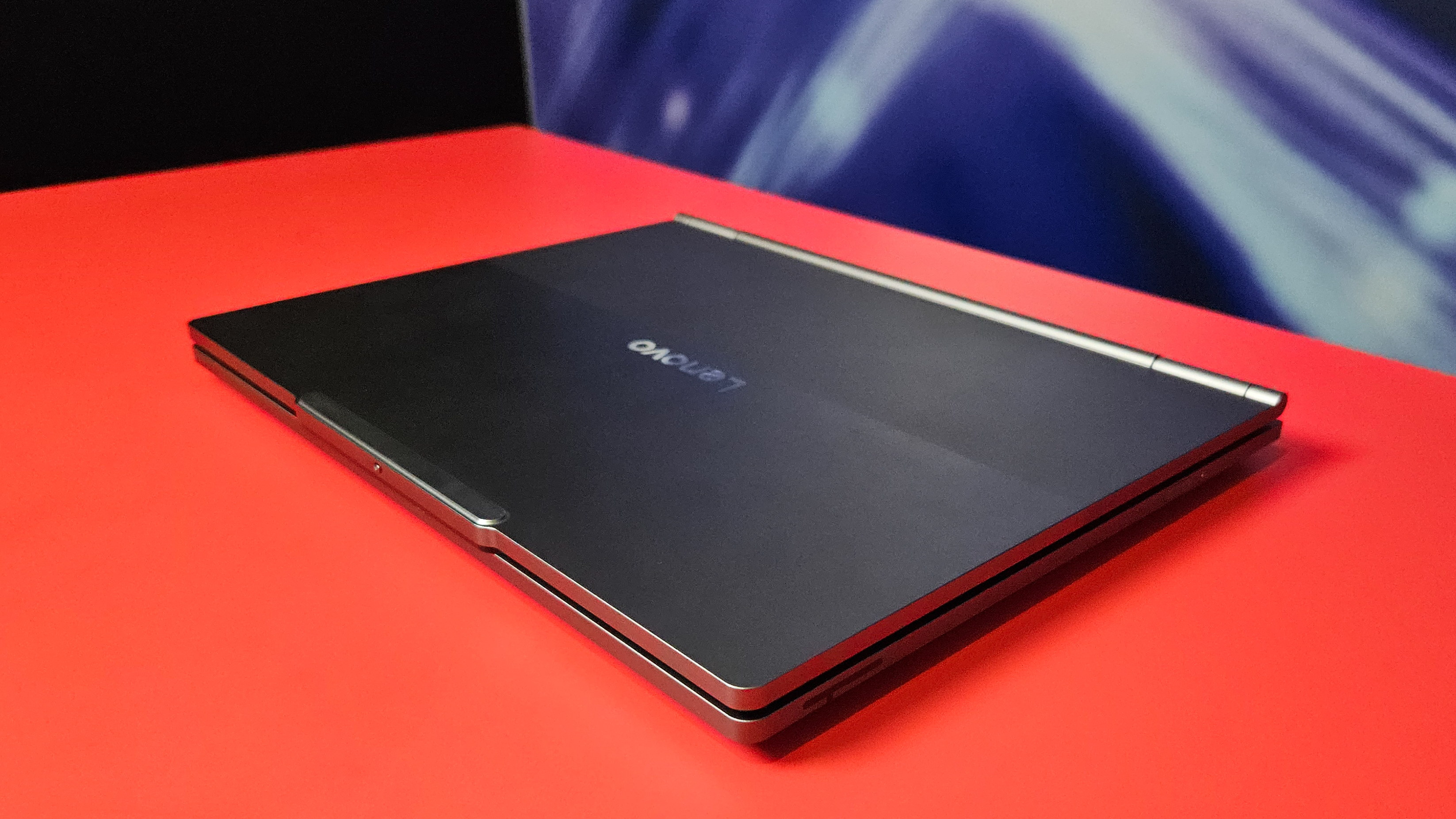
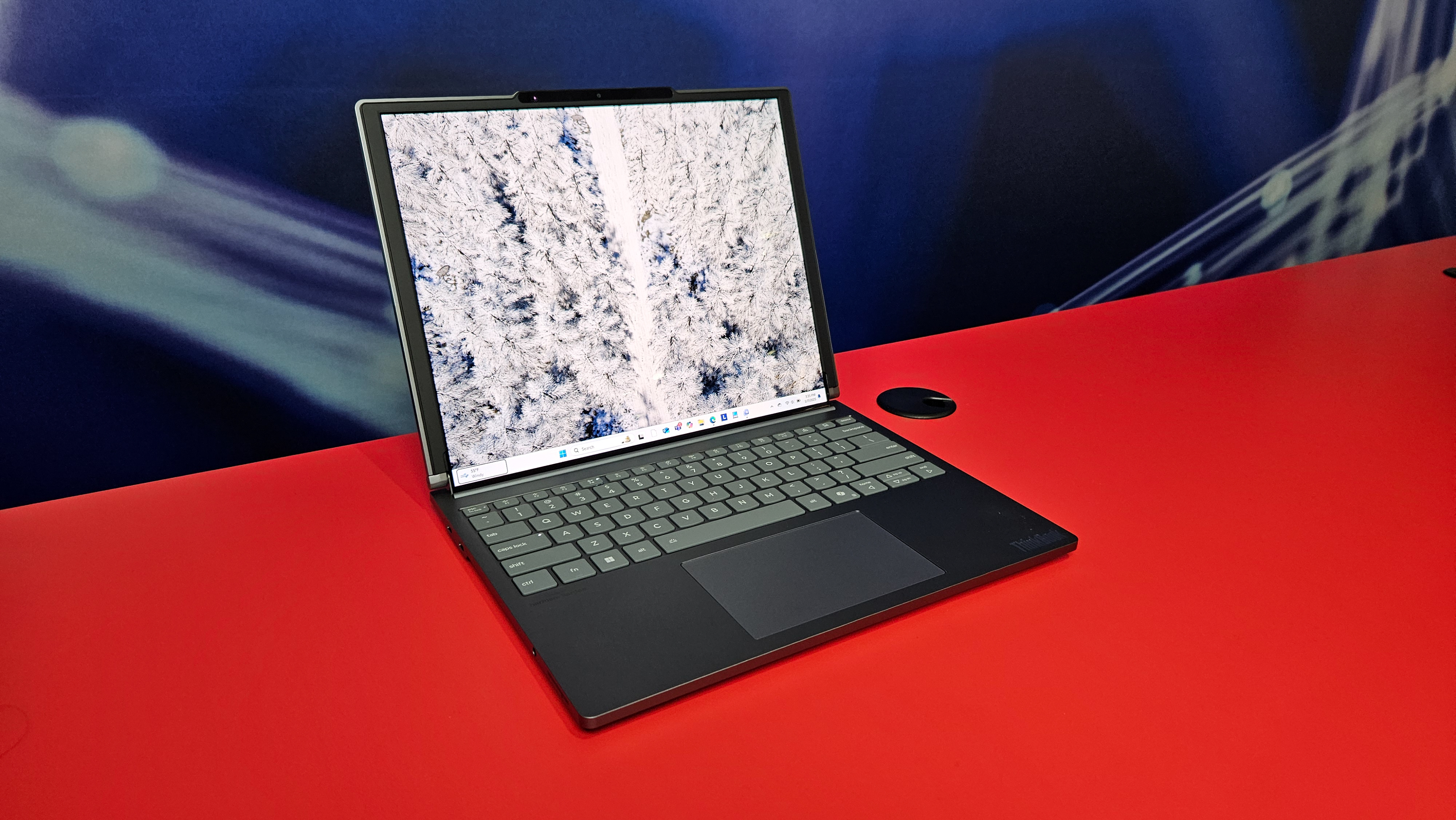
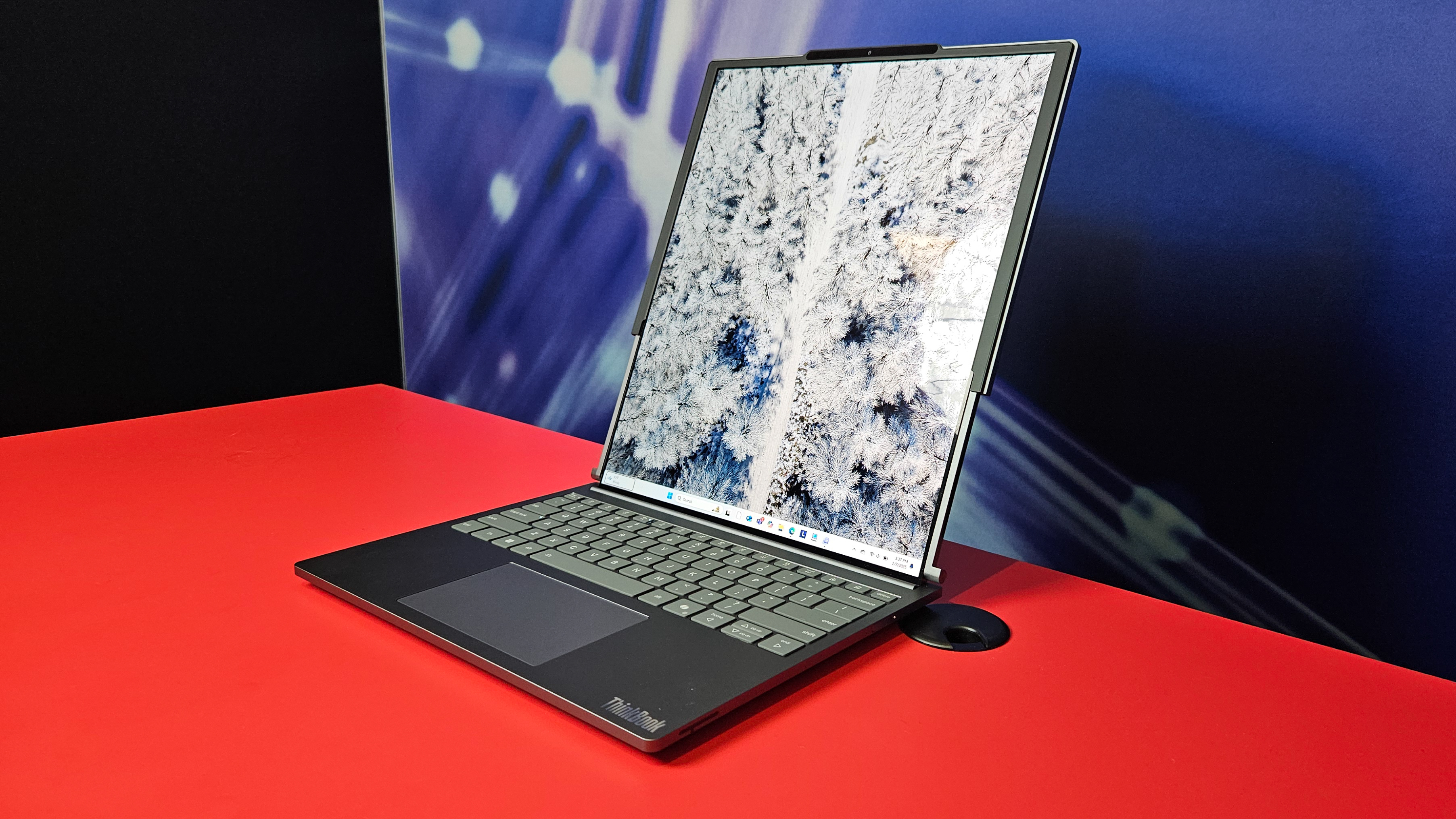
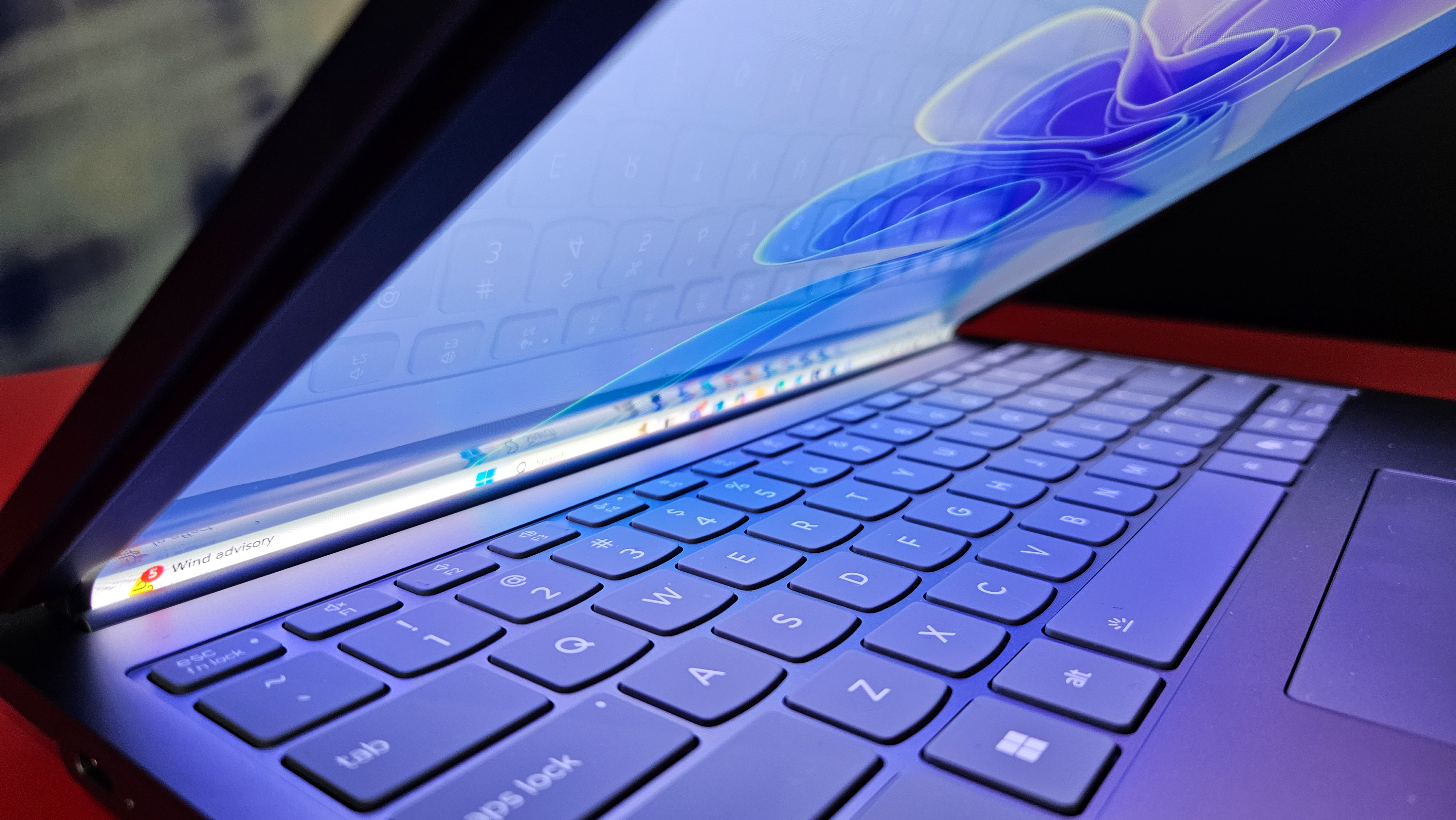
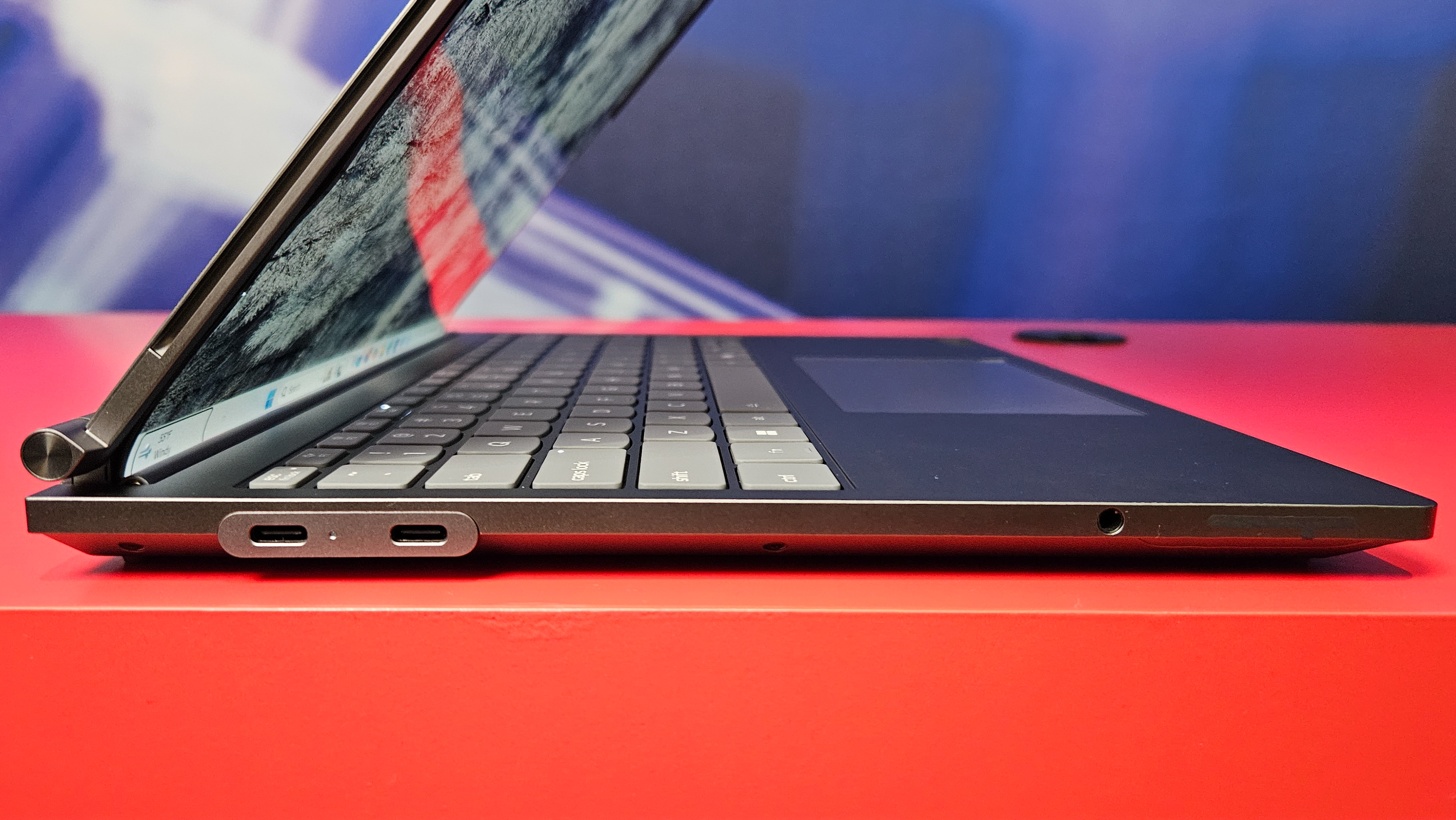
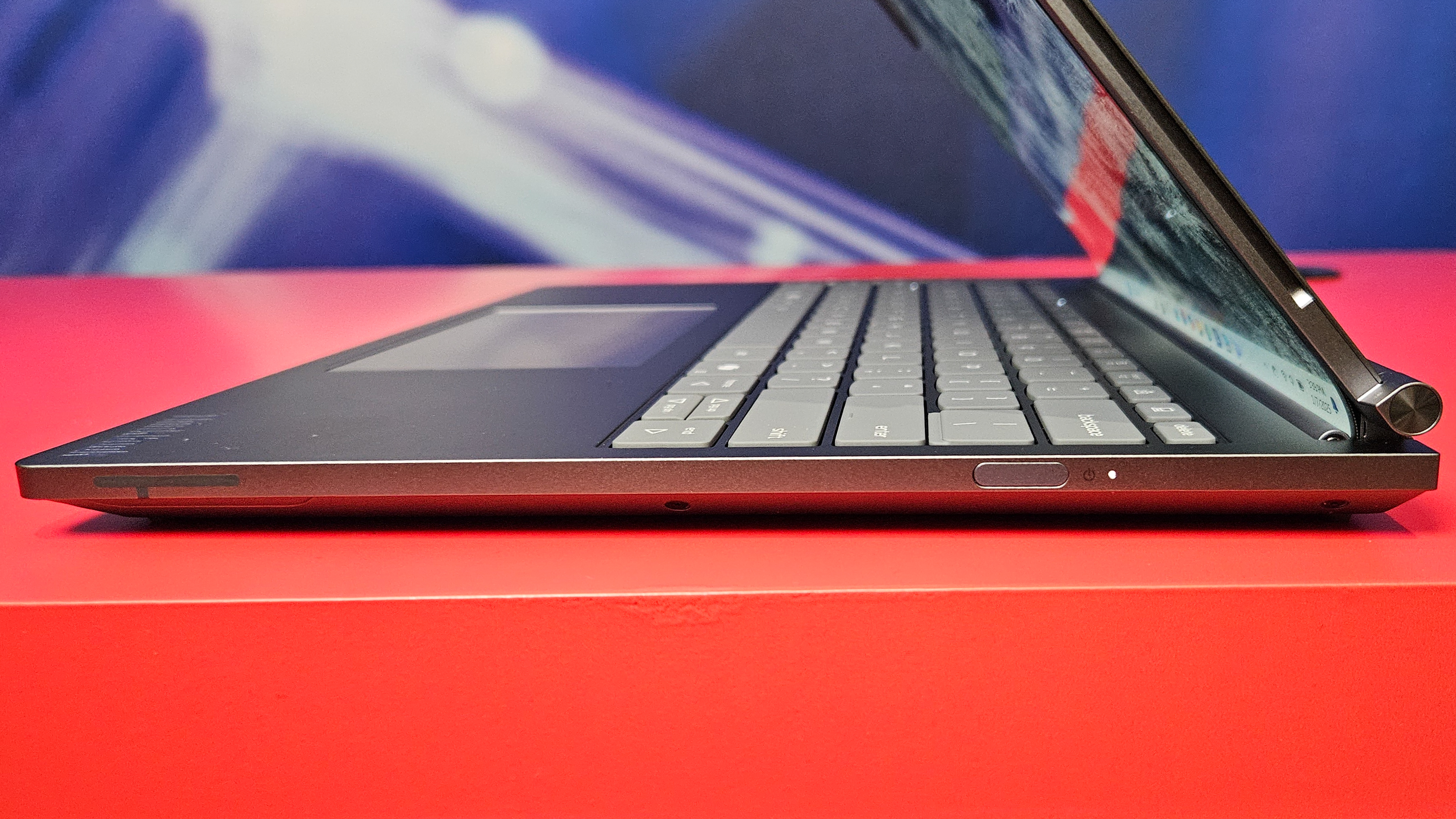
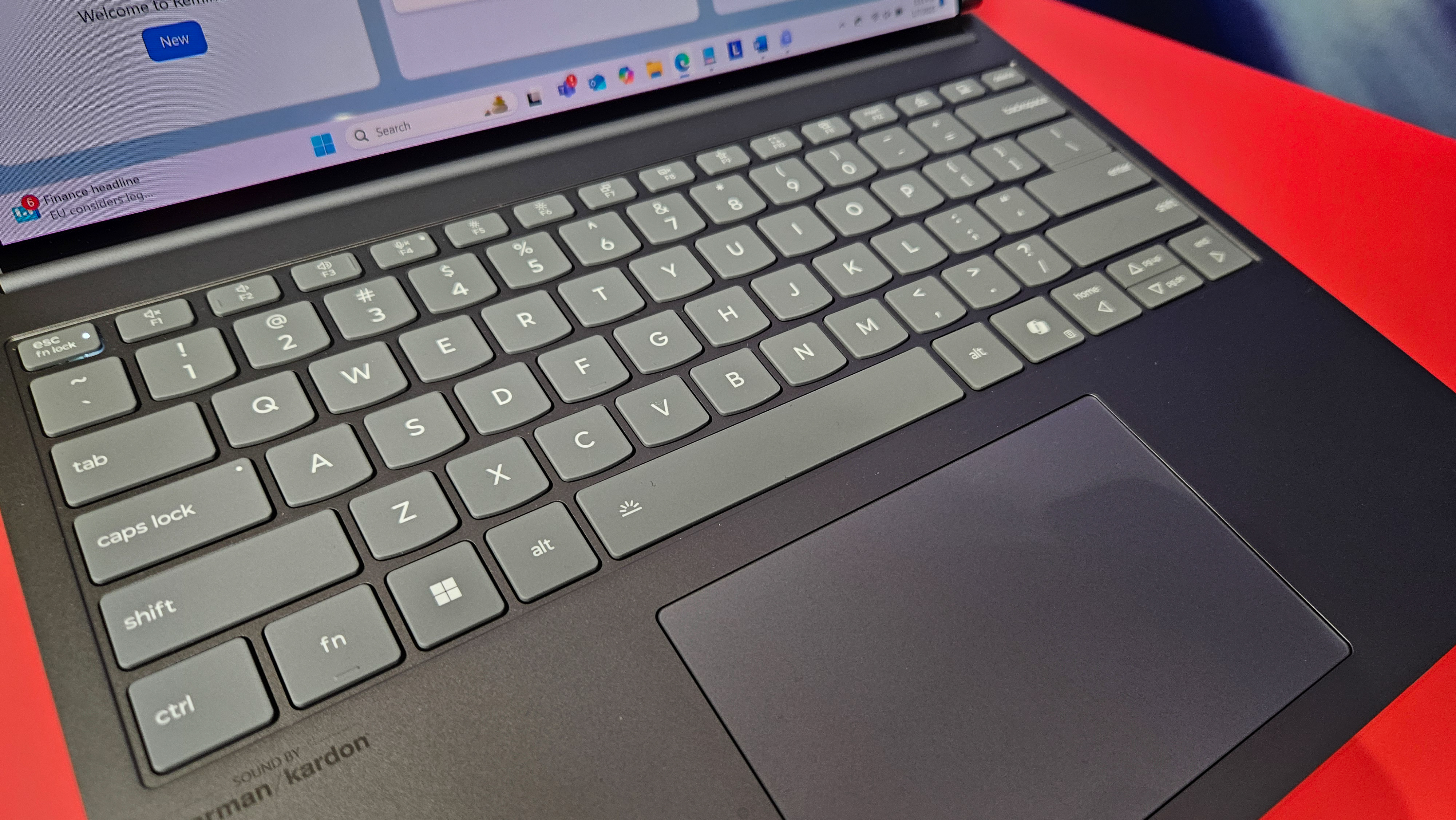
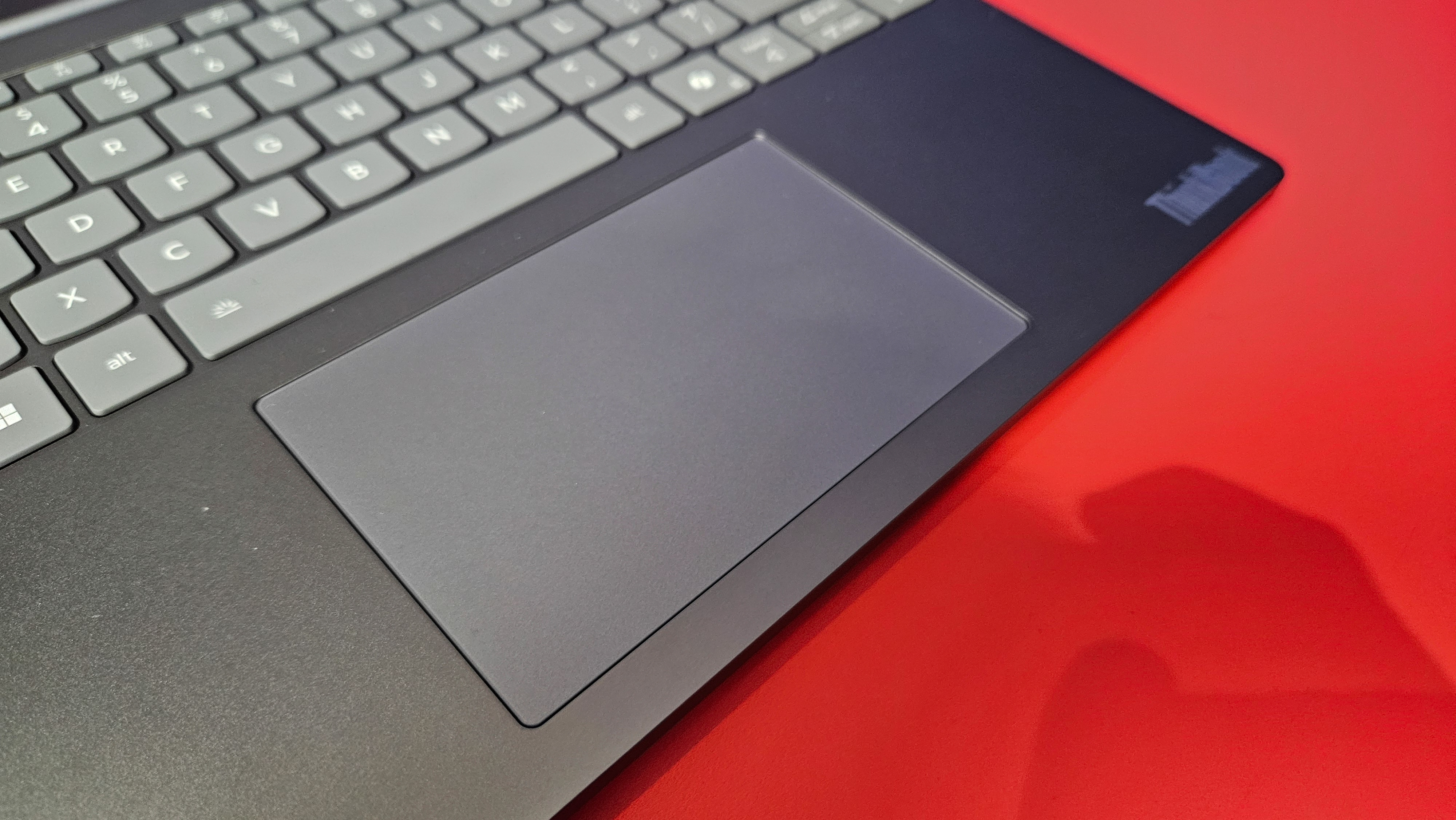
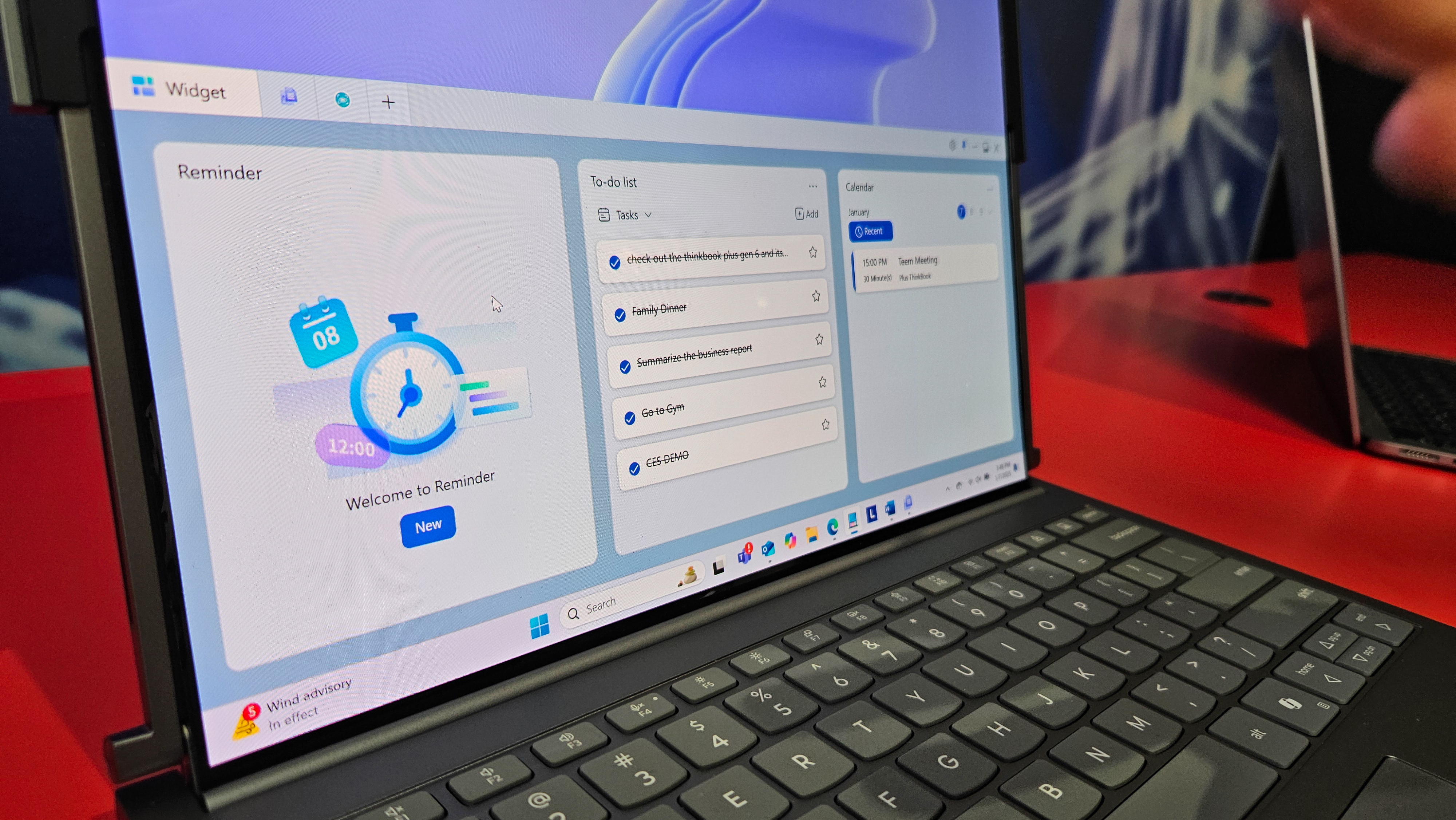
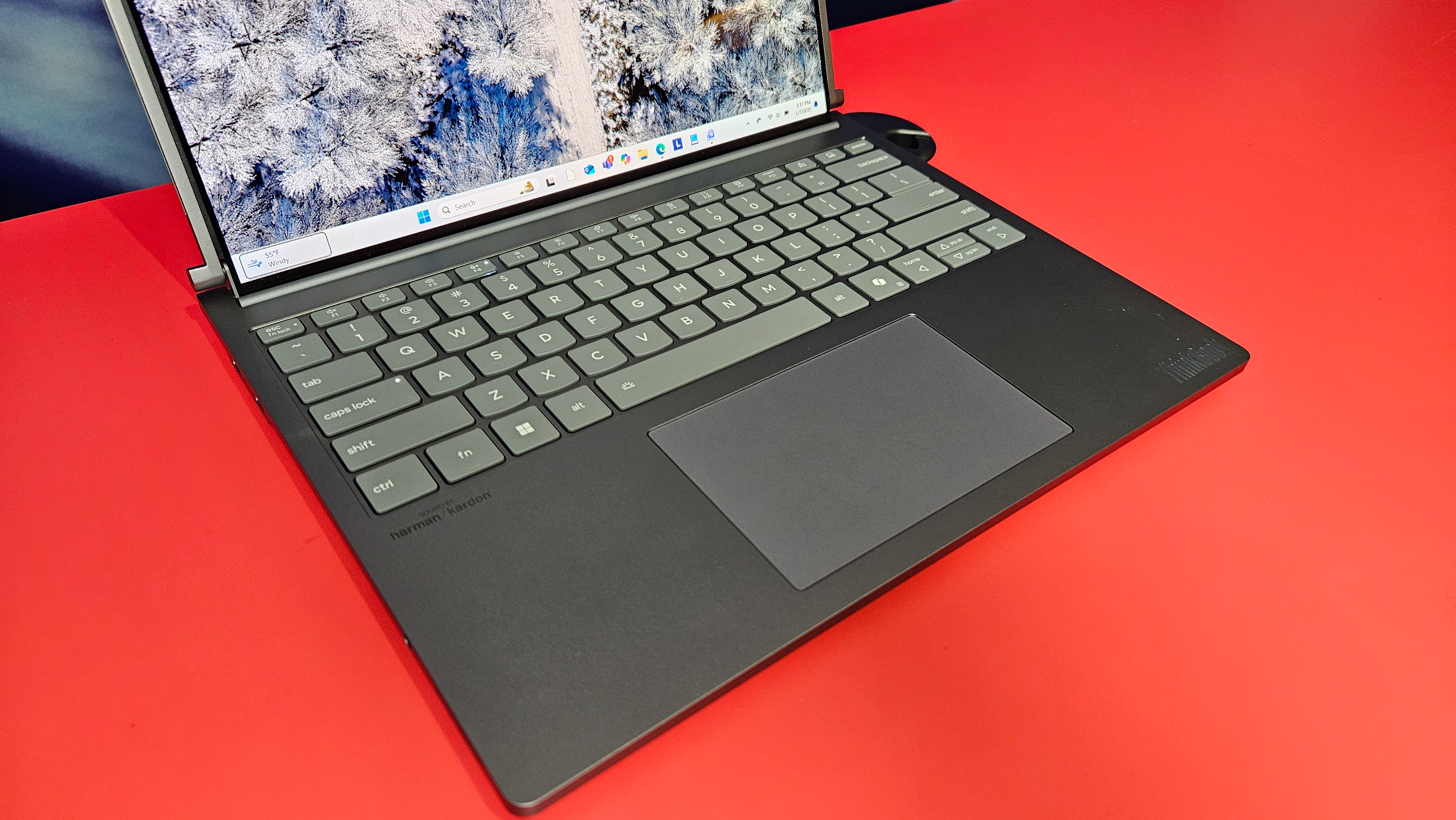

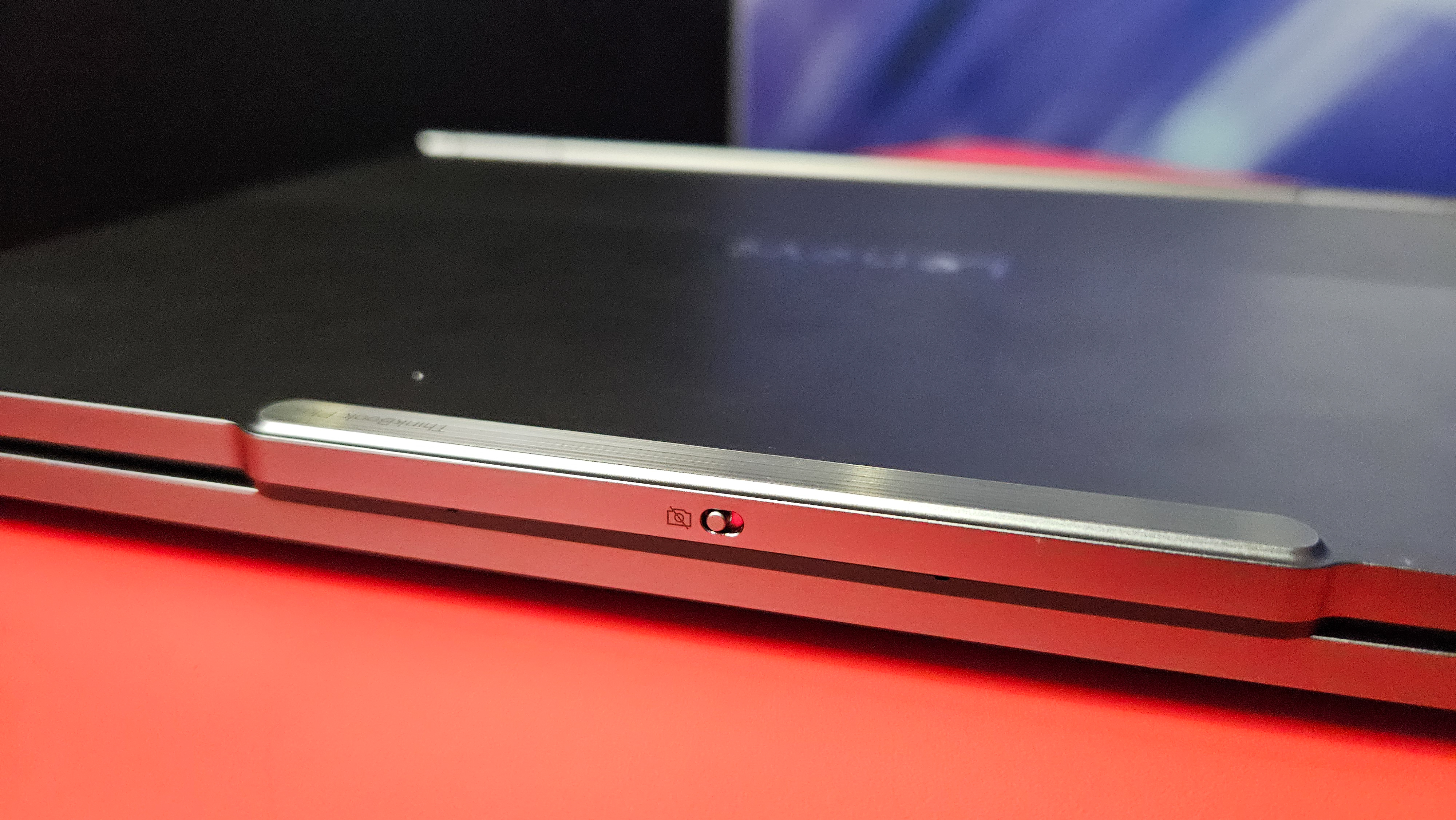
The first thing I was struck by is how bulky the device looks — and the "Luna Grey" finish on the aluminum chassis may not be as exciting as the blue you may find on other devices. Indeed, it's not a looker compared with some of the other machines Lenovo has just announced, but you can forgive that given that it's the first generation of the device.
The chassis itself looks premium and robust, with an almost shiny metallic finish that is, unfortunately, a magnet for fingerprints. At 0.78 inches (19.9 millimeters) thick, it's one of the chunkiest laptops out there, and at 3.73 pounds (1.69 kilograms), it's far heavier than plenty of other machines — but that's obvious when you consider it needs to accommodate the display.
Lenovo ThinkBook Plus Gen 6 Rollable: Display













The 16.7-inch (42.4 centimeters) OLED display is the laptop's standout feature. Part of it resides under the keyboard until summoned at the tap of a key (the laptop adopts a 14-inch form by default). We were unable to test the quality of the display, but Lenovo claims it can reach 400 nits — which is reasonable for an OLED panel and above average for laptops. I noticed that, to the naked eye, it did seem bright and vibrant enough, but I'll be looking forward to testing how accurate its colors are too once review models become available.
As for durability, Lenovo representatives told Live Science the machine has undergone 30,000 test cycles for opening and closing the lid and 20,000 cycles for activating the rollable display. Unless you spam the button repeatedly every day, that should last you many years.
We should note that the laptop makes a machine-esque whirring noise — alongside an optional jingle and animation — when you activate the rolling feature. It takes approximately eight seconds in total to transition from one size to the other, so you may want to consider turning off the jingle after the first few times you use it — a tune like that is a nice quirk, but it can get old quickly.
Lenovo ThinkBook Plus Gen 6 Rollable: Keyboard and touchpad













The light gray of the ThinkBook Plus Gen 6's keyboard offers a nice contrast with the darker chassis, and the same is true for the touchpad between them. For the brief period I was using the machine, typing with the keys did feel like it lacked something. The travel distance was shorter than I would have liked, and there was a noticeable lack of resistance and feedback — although the keys did make plenty of noise and felt snappy.
Overall, I would predict that typing for extended periods may not be the most comfortable experience. As for particular keys, there are no major surprises, apart from two unique function keys — one to summon or dismiss the extended display, and a second to activate the ThinkBook Workspace suite of widgets and apps, which normally resides on the lower third of the extended 16.7-inch screen. Elsewhere its touchpad seemed responsive and smooth, although clicking with the left- and right-click buttons did give it a certain hollowness. This is a very minor note, however, and it's generally pleasant to use.
Lenovo ThinkBook Plus Gen 6 Rollable: Performance and battery













The ThinkBook Plus Gen 6 Rollable is equipped with an Intel Core Ultra 7 Series (2nd-generation) processor, an Intel Arc Xe2 graphics card, up to 32GB of RAM and a 1TB SSD. Although we were unable to run the standard benchmarking tests we would in a full review, Intel's Intel Core Ultra 258V CPU — which was fitted into this demo unit — is expected to be a significant step up from the current generation of machines.
Lenovo representatives are not ready to share any concrete information about the laptop's lifespan, as it depends on a variety of factors, including how often the rollable screen is used. But when I hovered over the battery icon in Windows 11, it showed that our demo unit had 7 hours and 36 minutes of life remaining on 90%. I would take this figure with a pinch of salt and await proper testing before coming to a conclusion.
Lenovo ThinkBook Plus Gen 6 Rollable: Ports and features













Elsewhere, the machine includes just two USB-C ports and a 3.5 mm headphone jack. That's a little disappointing for a device this thick, but it may have been tough to incorporate more options when the main focus was on perfecting the display and how well it can roll. However, the machine does feature the latest connectivity standards, including Wi-Fi 7 and Bluetooth 5.4.
Lenovo ThinkBook Plus Gen 6 Rollable: Verdict













Whether the Lenovo ThinkBook Plus Gen 6 Rollable is right for you depends very much on how well you can utilize the additional screen. The rollable display is pretty much the only reason you would opt for such a machine, given that there are so many other options that are easier to carry or more stylish.
I was unable to verify how well this laptop performs compared with its counterparts, the quality of the display or the battery life. But the additional space you get is a huge pro, and you may not be able to give it up after you begin using it.
I enjoyed using the first generation of this machine briefly, but I do have a couple of bugbears I would like to see ironed out in future iterations. The $3,499 price tag might be a bit steep for most people looking for one of the best laptops for photo editing, but it could well be a great device to use in your home office for that productivity boost — so long as it can clear the bar in more rigorous testing.

Keumars is the technology editor at Live Science. He has written for a variety of publications including ITPro, The Week Digital, ComputerActive, The Independent, The Observer, Metro and TechRadar Pro. He has worked as a technology journalist for more than five years, having previously held the role of features editor with ITPro. He is an NCTJ-qualified journalist and has a degree in biomedical sciences from Queen Mary, University of London. He's also registered as a foundational chartered manager with the Chartered Management Institute (CMI), having qualified as a Level 3 Team leader with distinction in 2023.
